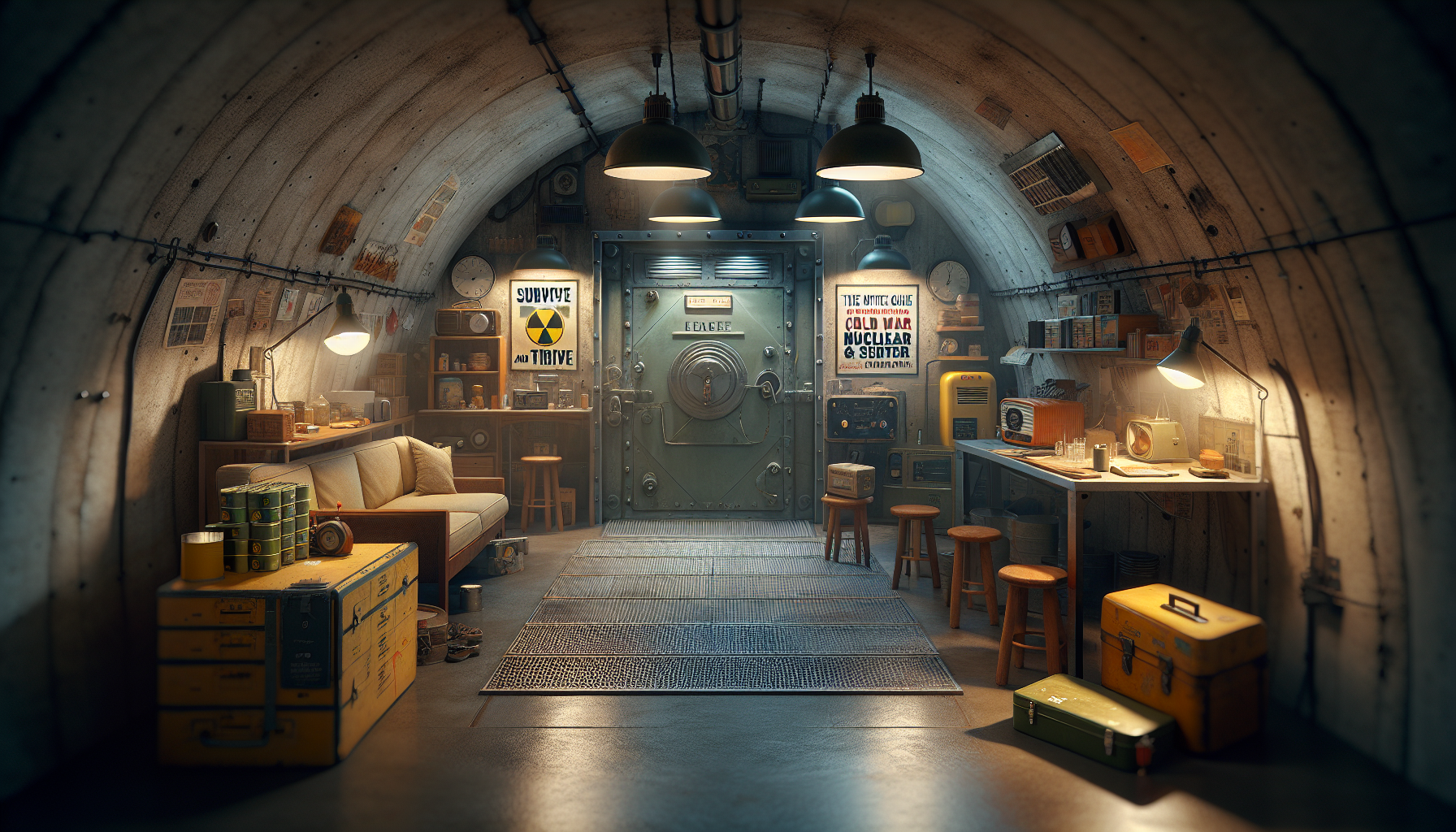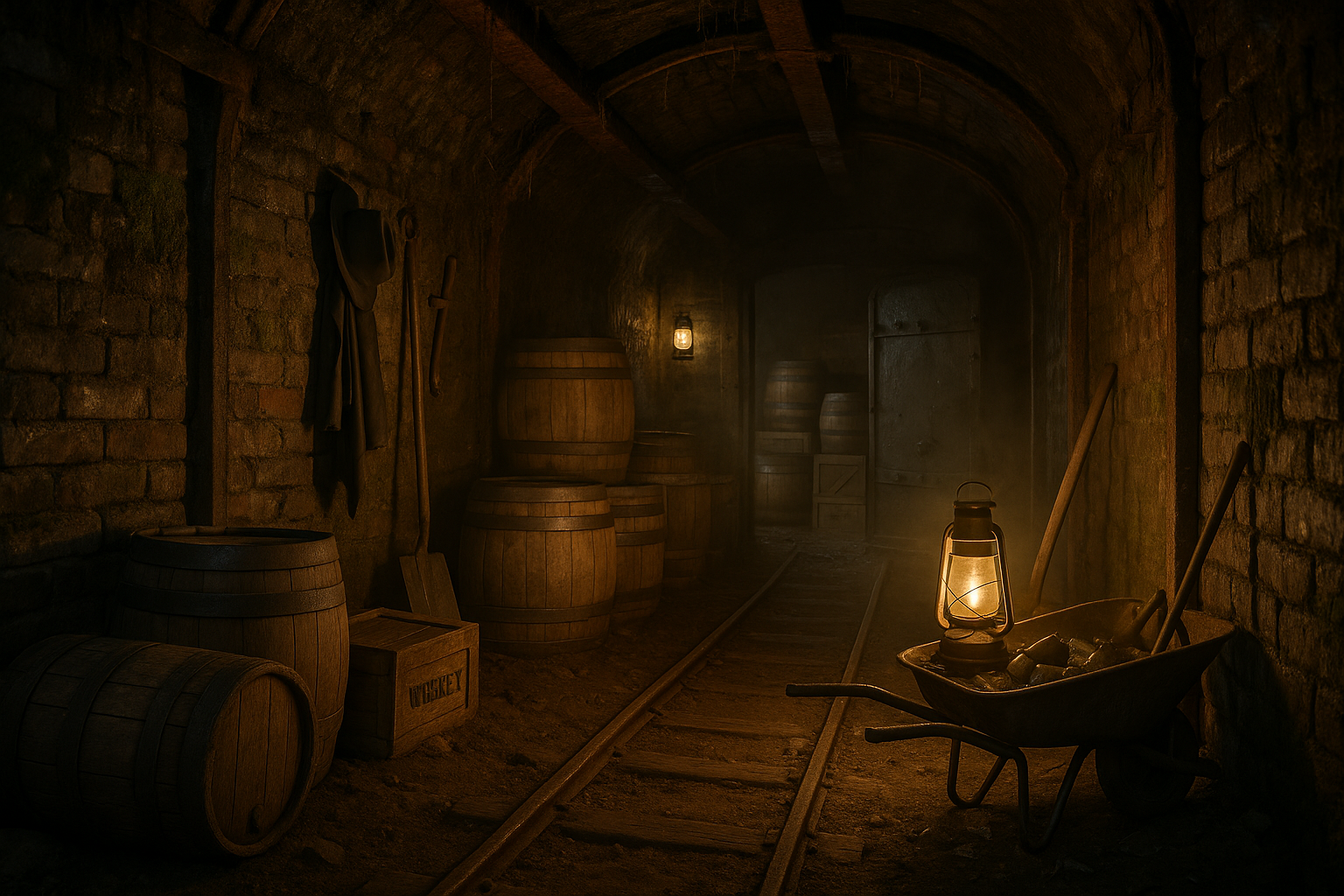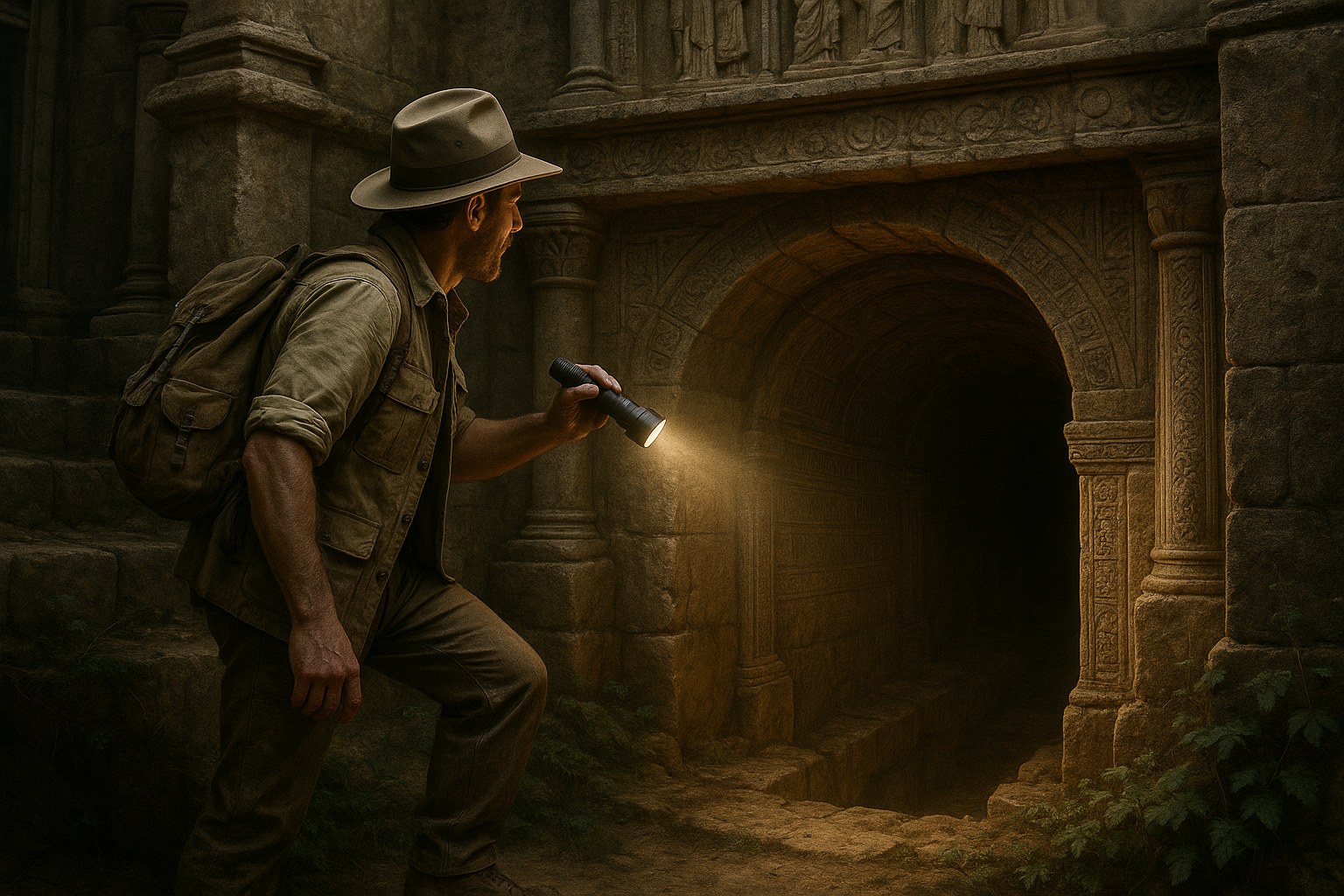In the shadow of an era defined by tension and the palpable fear of annihilation, the Cold War stands as a stark reminder of the fragility and resilience of human society. As nations teetered on the brink of nuclear conflict, a fascinating chapter unfolded beneath our very feet: the construction and preparation of nuclear shelters. These fortified bastions, shrouded in mystery and necessity, became symbols of hope and survival amid the looming threat of devastation. Today, as we look back on this tumultuous period, we uncover not only the architectural ingenuity but also the psychological and social underpinnings that shaped a global culture of preparedness and resilience.
Imagine a world where the possibility of a nuclear fallout was an ever-present specter in the minds of millions. For families, schools, and governments, the threat was not a distant abstraction but a pressing reality. This is where our journey begins—understanding the motivations and measures that drove individuals and societies to construct these shelters. From backyard bunkers to expansive underground complexes, the variety and sophistication of these structures reveal a rich tapestry of human ingenuity. In this guide, we delve into the history and evolution of nuclear shelters, examining how they were designed to protect and what life might have been like had they been called into use.
As we unravel the intricacies of Cold War-era shelters, we will explore key topics that bring to light the diverse aspects of this phenomenon. We begin by tracing the origins of these shelters, situating them within the geopolitical landscape of the 20th century. What role did fear and propaganda play in their proliferation? How did public perception influence governmental policies and private decisions regarding shelter construction? These questions will lead us to an in-depth analysis of the engineering and architectural feats achieved during this period, highlighting the balance between practicality and psychological comfort.
Furthermore, our exploration will shed light on the lives of those who prepared to survive the unthinkable. We will delve into the human element of shelter life, considering how people planned to sustain not just their bodies but also their spirits in the confines of underground safety. What provisions were deemed essential, and how did families and communities prepare mentally for such a scenario? By examining personal anecdotes, governmental records, and cultural artifacts, we aim to paint a vivid picture of the era’s mindset and readiness strategies.
Finally, we will turn our gaze toward the legacy of these shelters in today’s world. As remnants of a bygone era, they serve as poignant reminders of the past, yet they also offer valuable lessons for the future. In a time where global uncertainties continue to persist, what can we learn from the Cold War’s approach to survival? How do these lessons shape our current strategies for emergency preparedness and resilience? Through this comprehensive guide, we invite you to journey with us into the depths of history, uncovering the stories of innovation, fear, and hope that defined an age—and perhaps, offer insights into our own. 🌎✨
The Origins of Cold War Nuclear Shelters
The Cold War era, spanning from the end of World War II to the early 1990s, was characterized by political tension between the Soviet Union and the United States. During this period, the threat of nuclear warfare loomed large over the world, leading to widespread fear and anxiety. One of the key responses to this threat was the development and construction of nuclear shelters designed to protect civilians in the event of an attack. These shelters were not only architectural innovations but also cultural symbols of the time.
Initially, nuclear shelters were inspired by World War II bomb shelters. However, the magnitude of destruction that a nuclear bomb could inflict necessitated more robust and sophisticated designs. Governments around the world invested heavily in these protective structures, creating a network of bunkers that varied greatly in size and complexity. Some were simple backyard shelters, while others were massive underground facilities capable of housing thousands of people for extended periods.
The psychology behind the construction of these shelters was deeply intertwined with the geopolitical climate of the era. The arms race and the doctrine of mutually assured destruction (MAD) meant that both superpowers needed to demonstrate their preparedness for nuclear conflict. This resulted in a societal push towards self-preservation, with nuclear shelters becoming a physical manifestation of the Cold War mentality. People were encouraged to build personal shelters, and educational campaigns aimed to inform citizens on how to survive a nuclear attack.
Design and Features of Cold War Nuclear Shelters
Cold War nuclear shelters varied in design depending on the intended capacity and the resources available. At the core, all shelters aimed to provide safety from the immediate blast, as well as protection from the subsequent radioactive fallout. This meant that the location, materials used, and the structure itself had to be carefully considered to ensure maximum effectiveness.
The most common type of shelter for individual families was the backyard bunker. These small, often homemade structures were typically built underground to provide better protection. Construction involved materials like reinforced concrete and steel, designed to withstand substantial shockwaves. The interiors were equipped with basic necessities, including food supplies, water, and a filtration system to remove radioactive particles from the air.
Larger communal shelters, often built by governments, offered more sophisticated facilities. These included airlocks, sophisticated ventilation systems, and decontamination showers. The depth and complexity of these shelters varied significantly. Some were simple underground rooms, while others were elaborate multi-level complexes complete with living quarters, medical facilities, and even entertainment areas. These larger shelters could support hundreds or thousands of people for weeks or months, designed to be self-sufficient in the event of a prolonged crisis.
Technical Specifications
| Feature | Individual Shelters | Communal Shelters |
|---|---|---|
| Location | Backyard, Underground | Urban Areas, Remote Locations |
| Capacity | 4-6 people | 100-5000 people |
| Materials | Reinforced Concrete, Steel | Thick Concrete Walls, Advanced Ventilation |
| Facilities | Basic Living Quarters | Medical, Living, Recreational Facilities |
| Duration of Support | 2-4 weeks | Several months |
For a more visual understanding of these technical elements, watch the following detailed video on the design of Cold War bunkers: “Cold War Bunkers: Behind Closed Doors” by History Channel.
The Role of Government and Policy in Shelter Construction
The governments of the time played a crucial role in the proliferation and standardization of nuclear shelters. Policies were implemented to guide and sometimes mandate the construction of these facilities, with varying degrees of public and private sector involvement. In the United States, the Federal Civil Defense Administration (FCDA) was tasked with educating the public on nuclear preparedness and encouraging the construction of personal and community shelters.
In addition to public education campaigns, the government also provided financial incentives for shelter construction. Tax deductions, low-interest loans, and grants were offered to homeowners willing to build shelters on their properties. These measures were part of a broader strategy to bolster national security by ensuring that a significant portion of the population could survive a nuclear attack. The government also conducted tests and published guides outlining best practices in shelter design and construction.
Meanwhile, in the Soviet Union, shelter construction was more centralized and government-driven. The state took responsibility for building large communal shelters in major cities and industrial areas. These shelters were often integrated into public infrastructure, such as subway systems, doubling as transit and refuge points. The Soviet approach emphasized collective protection, with less focus on individual preparedness compared to Western counterparts.
Public Awareness and Education
- Government campaigns like “Duck and Cover” were launched to educate citizens.
- Instructional videos and booklets were distributed to inform the public.
- Public drills and exercises were organized to simulate nuclear attack scenarios.
The video “Duck and Cover (1951) – Atomic Bomb Safety Movie” by Bert the Turtle is an iconic representation of these educational efforts. Watch it to understand the era’s mindset.
The Evolution and Decline of Nuclear Shelters
As the Cold War progressed, the initial fervor surrounding nuclear shelters began to wane. Several factors contributed to this decline, including advancements in diplomatic relations and the realization of the immense cost and impracticality of maintaining these structures long-term. By the 1970s, many shelters had fallen into disrepair, and public interest had shifted towards other concerns.
Technological advancements in missile technology and detection systems also influenced the decline in shelter construction. The development of early warning systems and missile interception technologies gave rise to the belief that nuclear war could potentially be avoided through strategic defense rather than civilian preparedness. This shift in focus led to reduced funding and interest in shelter maintenance and development.
Today, many of these Cold War shelters have been repurposed or abandoned. Some have been converted into museums or tourist attractions, offering a glimpse into the past. Others remain sealed and forgotten, relics of a bygone era. Despite their decline, the legacy of these shelters persists, serving as a reminder of the geopolitical tensions and the human drive for survival.
For those interested in exploring the remnants of these shelters, watch “Exploring Abandoned Cold War Bunkers” by The Proper People for an immersive journey through these historical sites.
Modern Applications and Relevance
- Some shelters are used for data storage due to their secure locations.
- Others have been transformed into luxury doomsday bunkers.
- Research continues on shelter design for current global threats.
The enduring fascination with Cold War nuclear shelters speaks to our ongoing concerns about global security and preparedness. While the context may have changed, the fundamental desire to protect ourselves and our loved ones remains a constant in the human experience. To delve deeper into this topic, check out “Luxury Doomsday Bunkers of the Rich and Famous” by Bloomberg Quicktake Originals for a modern perspective.

Conclusion
Certainly! Here is a comprehensive conclusion for the article “Survive and Thrive: The Ultimate Guide to Cold War Nuclear Shelters”:
—
In wrapping up our exploration of Cold War nuclear shelters, it’s essential to distill the key insights and reflect on the profound importance of understanding this pivotal historical era. The Cold War era, marked by a pervasive sense of impending nuclear threat, spurred the development of a wide array of strategies and infrastructures designed to protect and preserve life in the face of potential catastrophe.
Throughout this guide, we’ve delved into the multifaceted aspects of nuclear shelters, examining their historical context, design intricacies, and the psychological and societal impacts they had during their peak usage. We began by revisiting the genesis of these shelters, tracing their evolution as geopolitical tensions between the United States and the Soviet Union escalated. The specter of nuclear warfare necessitated innovative solutions, leading to the development of shelters that ranged from basic household bunkers to sophisticated government installations.
A key takeaway from our discussion is the architectural and engineering ingenuity that characterized these shelters. They were designed to withstand unimaginable forces, incorporating advanced materials and construction techniques that are still studied and revered in contemporary civil defense planning. The psychological aspect, too, cannot be understated; these shelters represented more than physical safety—they were symbols of hope and resilience in a world overshadowed by fear.
Moreover, the cultural legacy of nuclear shelters extends beyond their physical form. They have influenced literature, film, and popular media, serving as poignant reminders of a time when the balance of peace hung by a thread. This cultural imprint underscores the enduring relevance of Cold War nuclear shelters, providing valuable lessons in preparedness and the human spirit’s capacity to adapt in the face of existential threats.
Reflecting on the importance of this topic, it’s clear that the lessons learned from Cold War nuclear shelters remain pertinent today. As modern society grapples with new challenges—ranging from geopolitical tensions to natural disasters—the principles of preparedness and resilience continue to hold great value. In this sense, the study of nuclear shelters is not merely an exercise in historical curiosity but a crucial framework for understanding and navigating present and future uncertainties.
We encourage you, our readers, to further explore this fascinating subject. Whether through academic study, visiting preserved shelters, or engaging in discussions with peers, the knowledge and insights gained can serve as a catalyst for deeper awareness and preparedness in your own lives. Feel free to share your thoughts, insights, or questions in the comments section below. Your engagement not only enriches the conversation but also helps build a community of informed and proactive individuals.
Additionally, consider sharing this article with friends, family, or colleagues who might find the topic intriguing or beneficial. In doing so, you contribute to a broader dialogue about our collective history and future preparedness. 🌍
For those eager to delve deeper, here are some recommended resources for further reading and exploration:
– [The Cold War Museum](https://www.coldwar.org/)
– [National Park Service: Cold War Historic Sites](https://www.nps.gov/subjects/coldwar/index.htm)
In conclusion, the story of Cold War nuclear shelters is one of ingenuity, determination, and an enduring quest for security in an uncertain world. As we reflect on this narrative, may it inspire us to cultivate resilience and foresight in addressing the challenges of today and tomorrow. Thank you for joining us on this journey, and we look forward to hearing your thoughts and insights. Let’s continue to learn from the past and shape a safer, more informed future together. 🌟
—
Toni Santos is a visual storyteller and artisan whose work explores the quiet power of what lies beneath. With a deep fascination for subterranean and hidden architecture, Toni uncovers the layers, voids, and forgotten spaces that shape our built environment from the shadows.
His art is a journey through the unseen — from ancient underground chambers to sealed passageways, service tunnels, and foundations buried in time. Each creation tells a story of silence, secrecy, and structure — revealing how absence and concealment can be just as meaningful as what’s visible above ground.
Whether working through visual compositions, architectural studies, or symbolic handcrafted pieces, Toni captures the soul of hidden spaces. His work bridges art and archaeology, blending design with discovery. Trained in visual design and traditional techniques, Toni creates with intention. His pieces don’t just depict — they interpret, inviting viewers to rethink what space, memory, and architecture mean when they’re hidden from view.
As the creative force behind Vizevex, Toni shares this perspective through curated visual narratives, symbolic collections, and interpretive essays that give voice to the quiet geometries beneath our feet.
His work is a tribute to:
The mystery of spaces built to be forgotten
The symbolism embedded in foundations, voids, and passageways
The timeless connection between human intention and hidden structure
Whether you’re an artist, an urban explorer, or someone fascinated by the unseen frameworks that support our world, Toni invites you into a realm where architecture becomes myth — one corridor, one layer, one buried story at a time.





